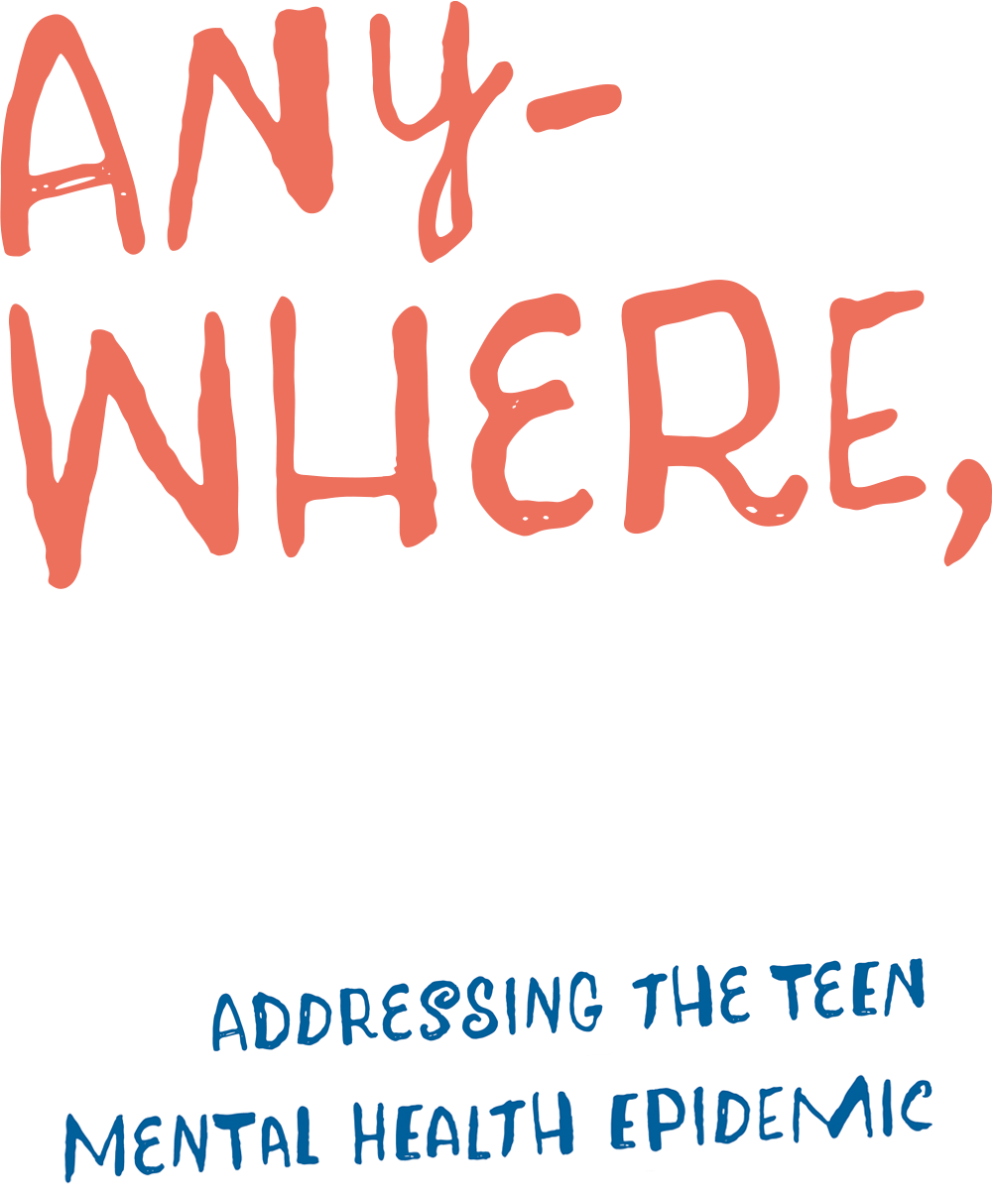
 y seventh grade, Zachary Nimmo had meticulously mapped out his future to the tiniest detail — take every engineering course offered at Amador Valley High School in Pleasanton, attend Las Positas Community College for two years, transfer to Cal Poly to earn an engineering degree, then move to Seattle. His friends called him a hybrid — an excellent soccer and lacrosse athlete and a self-proclaimed geek — passionate about computers, coding and comic books. But something started to change in eighth grade, and his parents were concerned with his darkening behavior.
y seventh grade, Zachary Nimmo had meticulously mapped out his future to the tiniest detail — take every engineering course offered at Amador Valley High School in Pleasanton, attend Las Positas Community College for two years, transfer to Cal Poly to earn an engineering degree, then move to Seattle. His friends called him a hybrid — an excellent soccer and lacrosse athlete and a self-proclaimed geek — passionate about computers, coding and comic books. But something started to change in eighth grade, and his parents were concerned with his darkening behavior.
“Our first signal was isolation. He was seeing friends less frequently, then no longer wanted to play sports, and spent more time alone in his room,” said his father, Steve Nimmo. “We took him to his pediatrician and Zachary was diagnosed with severe anxiety.” Zachary’s parents and doctors immediately took steps to help him, but, tragically, on Oct. 26, 2018, just two months into his freshman year in high school, Zachary Nimmo took his own life. He was 14.
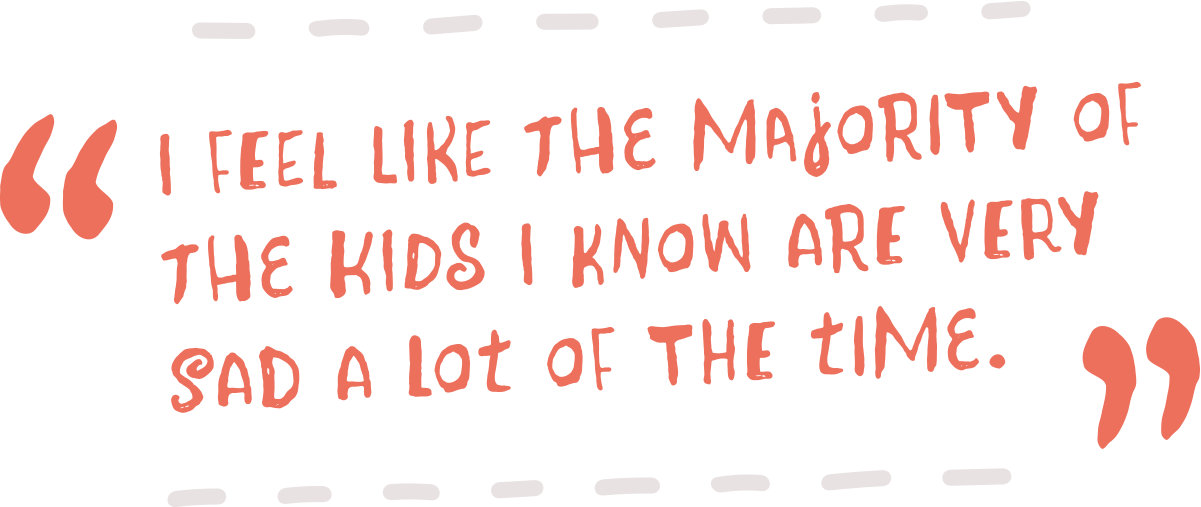
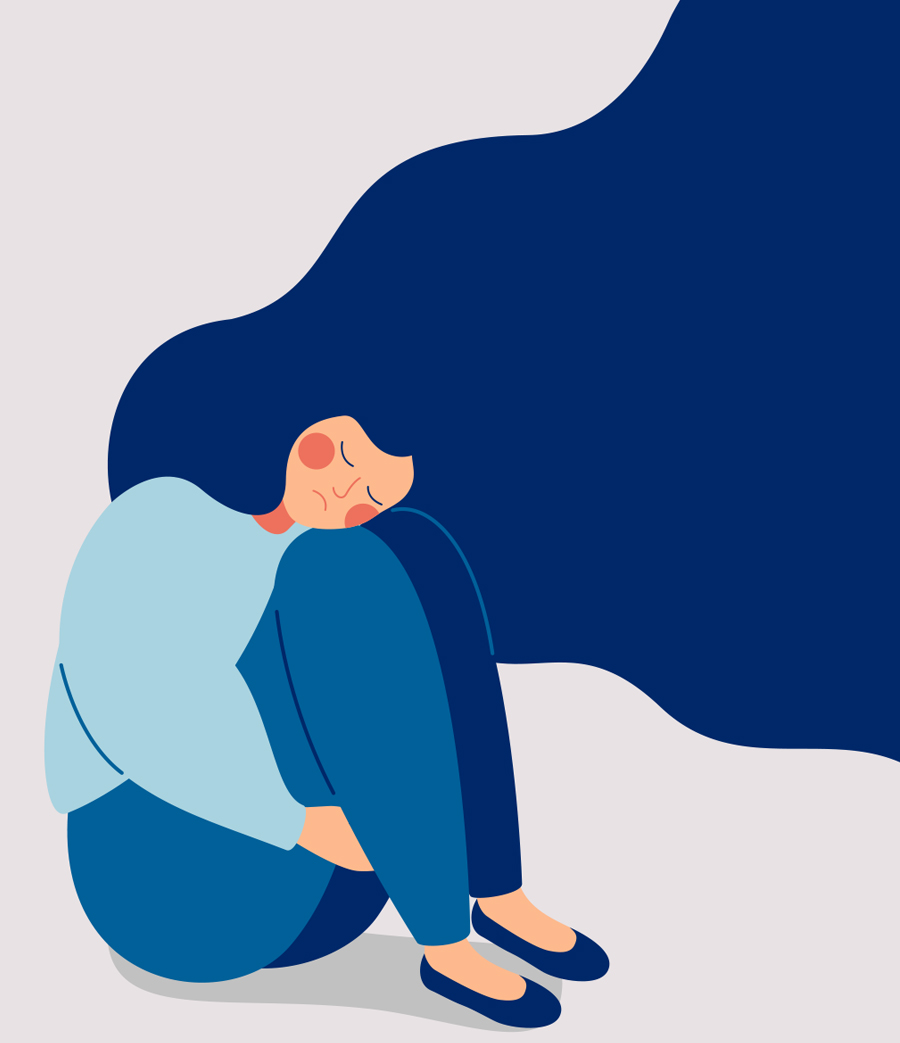

 y seventh grade, Zachary Nimmo had meticulously mapped out his future to the tiniest detail — take every engineering course offered at Amador Valley High School in Pleasanton, attend Las Positas Community College for two years, transfer to Cal Poly to earn an engineering degree, then move to Seattle. His friends called him a hybrid — an excellent soccer and lacrosse athlete and a self-proclaimed geek — passionate about computers, coding and comic books. But something started to change in eighth grade, and his parents were concerned with his darkening behavior.
y seventh grade, Zachary Nimmo had meticulously mapped out his future to the tiniest detail — take every engineering course offered at Amador Valley High School in Pleasanton, attend Las Positas Community College for two years, transfer to Cal Poly to earn an engineering degree, then move to Seattle. His friends called him a hybrid — an excellent soccer and lacrosse athlete and a self-proclaimed geek — passionate about computers, coding and comic books. But something started to change in eighth grade, and his parents were concerned with his darkening behavior.
“Our first signal was isolation. He was seeing friends less frequently, then no longer wanted to play sports, and spent more time alone in his room,” said his father, Steve Nimmo. “We took him to his pediatrician and Zachary was diagnosed with severe anxiety.” Zachary’s parents and doctors immediately took steps to help him, but, tragically, on Oct. 26, 2018, just two months into his freshman year in high school, Zachary Nimmo took his own life. He was 14.

Teens seem to agree. “I feel like the majority of the kids I know are very sad a lot of the time,” said a 17-year-old San Jose student, who wanted to remain anonymous for this article. “They will Snapchat me and tell me how they want to die or how school gives them so much anxiety that they want to cry. Sometimes it’s just kids complaining — other times you’ll see posts like ‘I’m literally going to kill myself.’” This student has attempted suicide twice; first in seventh grade and again just before her sophomore year.

The question remains, why are teens in Palo Alto and beyond resorting to suicide in the first place? “We know there is typically not just one cause that leads to suicidal ideation or attempts,” Krautter said. “Usually it is a culmination of things. Many of my patients report extremely high expectations being placed on them, which lead to a fear of failure, disappointing their parents and embarrassing themselves with their peers.” Although Palo Alto’s suicide rate from 2003–15 was higher than that of other California cities (14.1/100,000 compared to California’s 5.3/100,000, according to a CDC report), it is only one of many communities grappling with this disturbing reality — and trying to come up with solutions.

The eclectic group of students on the CHC Teen Wellness Committee aims to change the perception of mental health stigmas and increase understanding across school campuses. “I was inspired to join the team on this committee after my brother’s close friend died by suicide in 2014,” said Renee Remsberg, a Mountain View High School junior. “I made a vow to help teens in my community who are struggling with their mental health, so no one feels like they are going through it alone.”
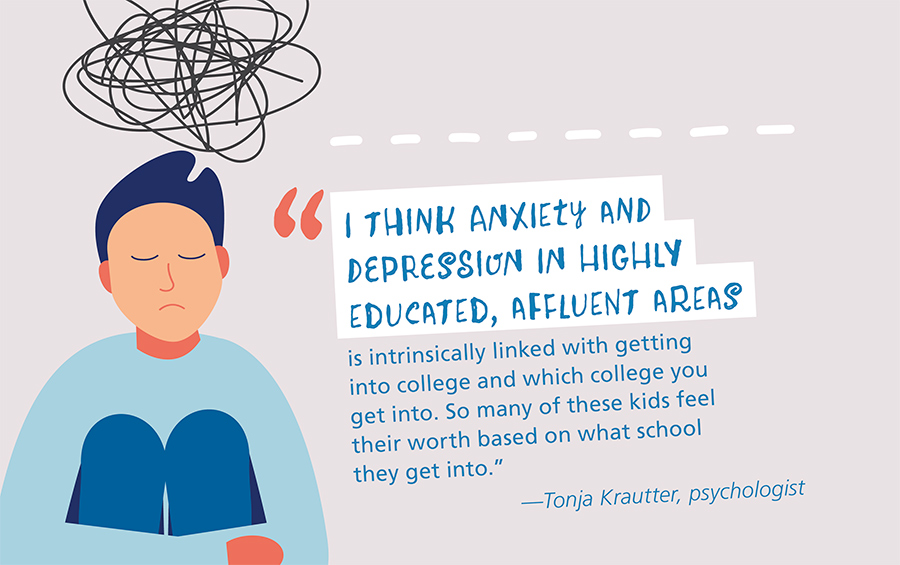
Another Bay Area resident joined the teen mental health conversation by creating a film called Angst to raise awareness around anxiety and mental health issue in teens. The movie has been screened more than 1,000 times in 20 countries over the past year in schools, communities and at major corporations like Microsoft and Hewlett-Packard, according to its creator, Emmy-award winning filmmaker Karin Gornick. The 56-minute documentary features Olympian Michael Phelps sharing his struggles with anxiety and depression. “Angst really is a journey,” Gornick said. She said she was inspired to create the film due to her own teen son’s mental health struggles and suicidal tendencies. “What I realized was just how treatable anxiety is and how much help and hope there is. There is so much hope.”
Following a screening of the film at John F. Kennedy Middle School in Redwood City School District, many parents in the audience shared that they understood the subject of anxious or depressed teens all too well. Gornick was in attendance and answered questions from the crowd. At one point, she ran into the audience to hug a mom who broke into tears mid-question and pointed her to resources available on the Angst website.
Districts such as Redwood City are working with community partners and finding creative ways to address student mental health with limited resources. “We have patch-worked together many support systems using existing staff and are relying on existing partners and bringing in new partners for support,” said Redwood City School District board member Alisa MacAvoy, in regard to the 9,000-student, preK-8 district. “We are continuing to think creatively on how we can support our students with their mental health needs.”
Zachary Nimmo’s parents have seen Angst and are committed to furthering the film’s mission to break the stigma of mental health issues and start a productive conversation about anxiety in teens. The Nimmos have started a foundation called ZCares and hope to work with local schools and sports clubs, building an infrastructure where “kids have a safe place for these very important conversations,” Steve Nimmo said. “If we can just help that one family, it’s all worth it to me.”

Many schools have made mental health a priority due to the demand they see on campus. In Palo Alto, schools have eliminated extra classes before school, cut down on homework, added therapists and changed the dialogue about college admittance, Meak said.
In Southern California, Long Beach Poly High School surveyed students and found “almost 72 percent surveyed have mild, moderate or severe symptoms of trauma (anxiety, depression, nightmares, poor sleep). Half of these students surveyed are student-athletes,” said school counselor Michael Gray. The school is making strides to reduce these stats. “Our school has the CARE Center, which is a place that students come for mental wellness interventions,” he said. “We have peer counselors to assist students in addition to a school counselor. We average approximately 1,200 visits per school year. We also have a YouTube channel called 2gether Tuesday that helps teach mental wellness and self-development skills.”
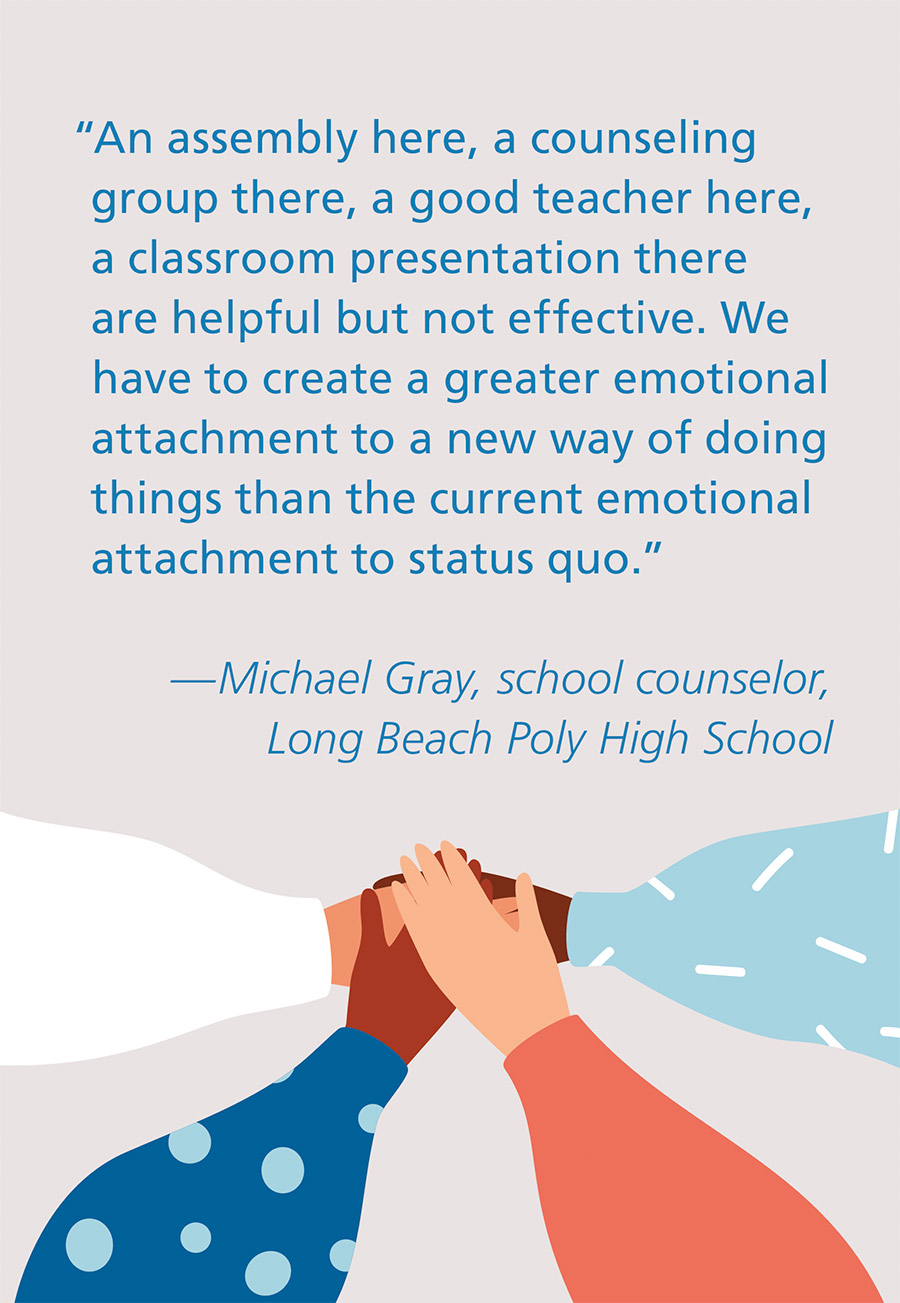
Gray said students who follow the CARE Center fundamentals report a reduction in anxiety and/or depression, explaining he’s noticed just utilizing “talk therapy” or “talk counseling” really doesn’t achieve desired goals. Instead, Long Beach Poly counselors are seeing that students have to take actions. Talk therapy in some cases actually feeds the loop of whatever is causing the anxiety and/or depression. Educators like Gray believe mental wellness skill-building has to become a part of every school day in every school. “An assembly here, a counseling group there, a good teacher here, a classroom presentation there are helpful but not effective. We have to create a greater emotional attachment to a new way of doing things than the current emotional attachment to status quo,” he said.

In San Jose, Cambrian School District board president Randy Scofield sees the need firsthand, stressing schools must acknowledge and deal with this crisis. “You try to engage a lot of stakeholders, try to ensure mutual cooperation inside your own four walls of your district,” he said. “From a board perspective, we may need to reprioritize funds.” Cambrian SD — a TK through 8 district with six schools — has implemented multiple steps to meet the increasing demand. Measures include integrating Second Step, a comprehensive social and emotional learning curriculum for preschool through fifth grade, and Habitude social emotional learning curriculum for sixth through eighth grade. The 3,350-student district offers school-based group counseling and social skills groups at four elementary schools and utilizes Positive Behavioral Interventions and Supports at all schools.
The reality is, though, Cambrian SD and most California districts find their mental health funding lacking and are challenged to find solutions. “Every day, we see significant need for our students and are trying to meet it to provide all the supports necessary, despite very limited funds from Sacramento, rising local costs and increasing demand,” said Cambrian SD Superintendent Carrie Andrews. “We rely heavily on collaboration and grants with local hospitals to fund additional mental health supports for our students, such as marriage and family therapists.”
Intentional efforts to better address mental health struggles can help eliminate the stigma attached to anxiety and depression. Teens who can recognize and articulate their challenges stand a greater chance of getting help, knowing they are not alone in their struggle, Krautter said. Youth, schools and communities are recognizing the necessity for innovative efforts, and, as a result, may be changing the mental health landscape for the better.
Dawn Foreman is the coordinator of marketing, communications and community engagement for the Cambrian School District in San Jose.